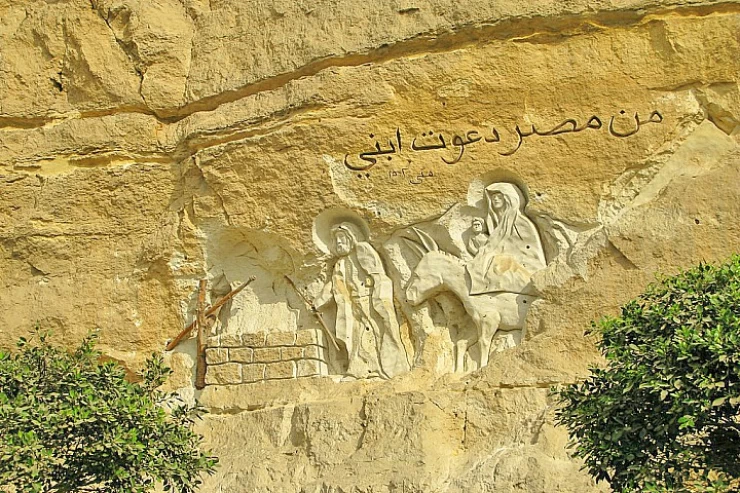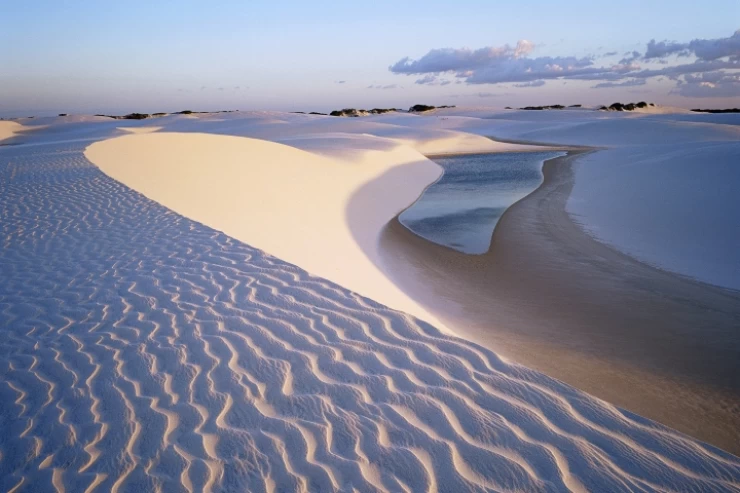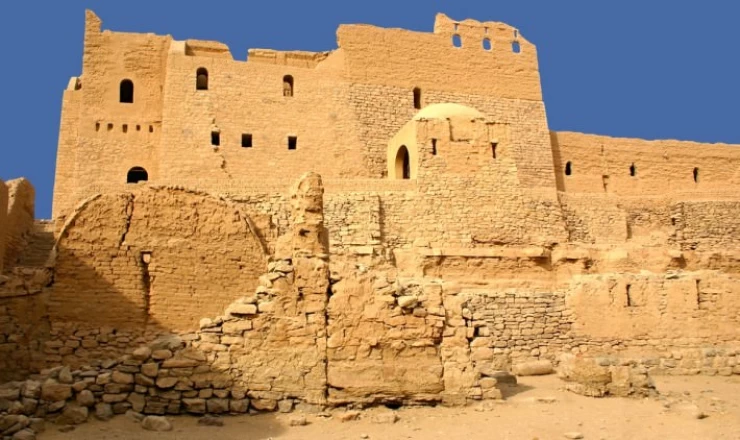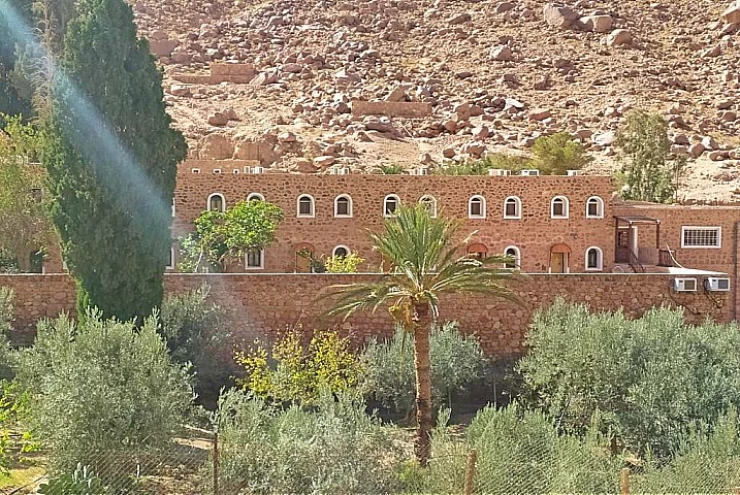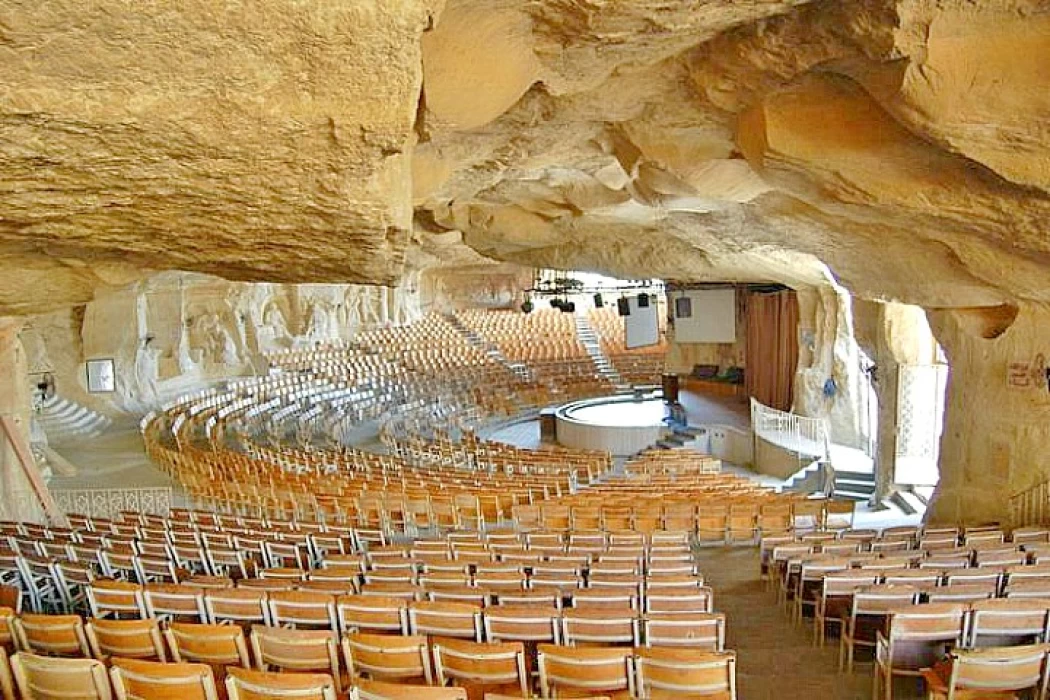
Монастырь Святого Симона Кожевника
Как только вы войдете в район горы Мокаттам и приблизитесь к району Абагья, ваши глаза приведут вас к одному из редчайших архитектурных артефактов, высеченных в самом сердце горы Мокаттам, и одному из творческих знаков горы. Высокая гора гармонично сочетается с характерной архитектурой, в которой был построен монастырь, и стала местом посещения большого количества туристов по всему миру.
Святой Симон Кожевник был ремесленником, жившим в 10 веке, и его монастырь считается одной из важных вещей, которые нужно сделать в Каире, но его обычно не посещают во время коротких маршрутов и однодневных туров по Каиру, а пещерная церковь, которая была посвящена ему, может не просуществовать еще 10 лет. Используя ранее существовавшую пещеру и склон, который вел в монастырь, он вмещает 20 000 человек о центральной кафедрой. Различные пещеры также были сформированы в отдельные церковные помещения, и все они были связаны между собой, создавая массивный христианский комплекс в самом сердце мусорного города. Ежегодно сотни тысяч людей совершают паломничество в монастырь. Сотни тысяч людей ежегодно совершают паломничество в монастырь.
Главная церковь здесь названа в честь Девы Марии и Святого Симона в память об истории открытия горы Мокаттам в ноябре 979 года, когда Симон Кожевник был избран для совершения этого чуда.
Гора Мокаттам обращена к Цитадели Саладина.

По словам историков, Я'куб ибн Кулас, еврейского происхождения, министр халифа аль-Му'изза Ледина Эллаха, был ярым антихристом, а халиф был человеком знающим и литературным. Последний пригласил патриарха коптов обсудить в его присутствии с евреями вопросы религии, и патриарх ответил на приглашение в сопровождении епископа Савируса ибн аль-Макфы. Во время дискуссии Савайрос обвинил евреев в невежестве, процитировав стих из Книги пророка Исайи, в котором говорится: "Бык знает трость свою, и осел - хозяина своего. Израиль не знает! Народ Мой не понимает!" (Исаия 1: 3). Это вызвало гнев Ибн Калласа, который вместе с одним из своих спутников решил ответить христианам, проделав брешь в их книгах, и его исследование завершилось стихом в Новом Завете, в котором Христос обращается к своим ученикам: "Если бы вы имели веру, как зерно горчичное, то сказали бы горе сей: перейди отсюда туда, и она перейдет, и ничто не будет вам невозможно. " (Матф. 20:17).
Министр представил этот стих халифу и попросил его заставить христиан доказать утверждения их книги. Это понравилось халифу, который хотел избавиться от горы к востоку от Каира. С другой стороны, если бы христиане уклонились от исполнения евангельского стиха, это стало бы доказательством несостоятельности их религии и верований. Аль-Моз послал патриарха сообщить ему о своей просьбе, пригрозив ему в случае неудачи тяжелыми последствиями и дав ему три дня на ее выполнение. Вся церковь страны в этот период постилась и молилась.
Религиозное повествование завершает историю, рассказывая о явлении Девы Марии патриарху на третье утро. Я велел ему выйти к человеку, несущему кувшин с водой, который будет избранным, чтобы совершить чудо на его руках. Выполнив заповедь Богородицы, Симон нашел хараза и рассказал ему о случившемся. Что касается последнего, то он попросил патриарха остаться среди людей в день, назначенный для перемещения горы, и оттуда совершить молитву, в то время как патриарх будет совершать крестное знамение. По его словам, это было сделано, когда произошло сильное землетрясение и гора сдвинулась с места, пока под ней не запылало солнце. После этого аль-Хараз скрылся, чтобы никого не похвалить.
На 2 этапе были построены Собор Девы Марии и Собор Святого Симона. сначала это была лишь огромная пещера из известняка в горе. 2-й этап был в ноябре 1994 года, который приходится на праздник Святого Симона. Вокруг алтаря были построены стационарные сиденья в виде четвертькруглого зрительного зала, вмещающего до пяти тысяч человек, и поэтому он стал самой большой церковью в монастыре.
Еще одна удивительная церковь монастыря - церковь Святого Болы, названная в честь первого паломника Святого Болы за добродетели, которыми он обладал. Он прожил в пещерах и уединении 70 лет, в течение которых ни разу не видел человеческого лица.

Пещера Часовни была обнаружена в 1986 году во время строительных работ, когда огромный камень упал, показав отверстие в потолке пещеры. Интересная история с этой церковью произошла в январе 1992 года, когда ей угрожал пожар, вызванный электрической искрой. Изображение Иисуса Христа, находящееся в церкви, и алтарь не пострадали, хотя весь интерьер пещеры был поврежден.
Далее у нас есть церковь Святого Марка (которая названа в честь Святого Марка, первого проповедника и считается первой церковью в Африке и Египте) и зал Святого Симона кожевника. Этот огромный грот был изобретен в 1979 году из сотен тонн камней на высоте 17 метров от земли. Стены украшены множеством чудесных картин, высеченных на камнях и представляющих сцены из Библии.
Много интересного можно узнать о необычном здании, которое называется Дворец барона Эмпейна. Оно расположено в большом городе Каире, который находится в стране Египет.
A Hidden Gem in Cairo's Mokattam Hills .One of the most remarkable and beautiful historical places of worship is the Monastery of Saint Simon the Tanner, also known as the Cave Church, situated in the hilly, rocky Mokattam Hills of Cairo. Unlike the busy and crowded capital city of Egypt, this beautiful monastery does not only serve as a tranquil sacred space open to those who come in to seek the presence of God but rather possesses an exceptional view of walls sculpted into rocks forming the structure of the church. The very history of the place is almost more than ancient Coptic Christianity and the miraculous. For this reason, no matter how much in a hurry one is, a visit to this place is worth it for every religious lover wanting to explore Egypt’s religious mosaic.
The monastery is named after Saint Simon the Tanner, a Coptic saint from the 10th century who is most celebrated for a miracle during the rule of the Fatimid Caliph Al-Muizz. As per the Coptic tradition, it is said that during one of the reigns of the Copts, Al Muiz introduced a challenge to Pope Abram, the most senior leader of the Coptic Orthodoxy, to shift the Mokkatam mountain to illustrate that Christianity is true. After three days spent in prayers and fasting, Pope Abram had a vision of the virgin Mary, who asked him to look for Simon the Tanner. Simon, a simple leather craftsman who was very well connected with God, when the church gathered to pray, the mountain in question was raised, thus demonstrating the Christian religion to Al Muiz.
As a remembrance of this miracle, many centuries later, the large monastery compound in Mokattam was built in recognition of Saint Simon and the important event. At present, the monastery is also a monument to the Christian history of Egypt and the Christian context of the country.
The Monastery of Saint Simon the Tanner, which is located in the city of Cairo, is paradoxically quite remote. This monastery is located within Mokattam’s garbage city, wherein the Zabbaleen, are informal garbage cleaners of the city. The monastery, however, remains an island of peace amidst the turmoil. While the path to the monastery weaves through several narrow, twisting cores and squat buildings teeming with the city’s recycling activity, the view of the Cave Church’s gigantic rock-hewn altar is simply astounding.
The Monastery of Saint Simon the Tanner encloses an ensemble of several churches, each of exceptional interest: The most well-known and the one that leaves the greatest impression is The Cave Church, or, as it is more often referred to, The Church of Saint Simon the Tanner. This colossal area is hewn from the mountainside, making it the biggest church in the entire Middle East that can hold about 20,000 people. The inside of the cave is filled with religious images, paintings, and sculptures from the Holy Bible and the life of Saint Simon, which is all aglow with bright light coming from the rock ceilings. Above the cave, there are numerous cracks through which come rays of sunlight.
Within the compound, there are other notable churches such as:
The Church of Saint Mark: A compact but equally attractive church boasting soft stone carvings and quiet, contemplative areas for prayer and meditation.
The Church of Saint Bola: This church is also hewn from the rock and is cherished by tourists for its calm and peaceful interiors.
The Church of the Virgin Mary and St. Simon the Tanner: A congregation of faithful at a smaller church, where the churchgoers convene for daily masses and spiritual services.
Every church embodies a different spirit and embraces the beauty of nature along with the depth of spiritual culture.
The architecture of the Monastery of Saint Simon the Tanner is one of its most breathtaking features. The churches and spaces are not built conventionally but are hewed out of the rock of the Mokattam Hills. The use of natural, unprocessed limestone as the wall surfaces creates a rugged environment for the interior, allowing the guests to truly appreciate the ancient history of this place. This style of building also plays a part in enhancing the quality acoustic properties of the monastery, enabling the beautiful resonation of the Coptic liturgical hymns and chants all around the huge cave.
The outside view of the church complex is also exceptional. The corrugated grounds at the periphery of the monastery are embellished with high-relief sculptures and carvings that illustrate Biblical and Coptic cultural incidents. These high-stand carvings were done by a Polish sculptor, invariably hierarchy, thereby elevating the station of the site.
The Zabbaleen Connection
Over the last century, the Zabbaleen, a well-organized group of waste collectors or garbage collectors inhabiting the Mokattam region of Cairo, have had a very positive interaction with the Monastery of Saint Simon the Tanner. Most of the Zabbaleen are Copts, and like most communities in Egypt, they have suffered from troubles both social and economic. Nevertheless, a considerable part of this population has thrived in Garbage City through better integration of waste management and environmental services.
Though the purpose of the monastery transcends the physical boundary of the monastery, containing the Zabbaleen as it is, the monastery also offers hope and faith to these people. Some of the Zabbaleen assist in maintaining the monastery, and the place is important in their routine activity as a prayer and a meeting place. In addition to the monastery of Saint Simon the Tanner, a visit to the Zabbaleen's settlement reveals the extent to which their relentless work in recycling waste in Cairo went.
Religious significance and pilgrimage
The Monastery of Saint Simon the Tanner is a well-known place of pilgrimage for Coptic Christians not only in Egypt but also throughout the world. Many pilgrims primarily come to pray and meditate on the life and miracles of St. Simon. They seek inner healing and divine connection. The church also conducts regular services such as mass and other religious activities besides of the memorial services for Saint Simon, who is remembered annually on the 26th day of November.







